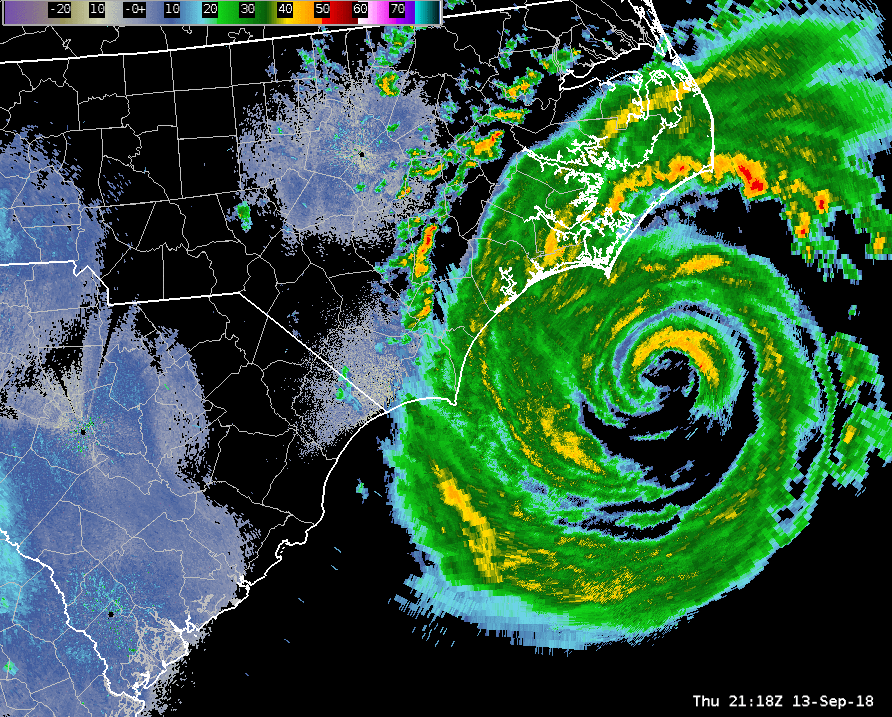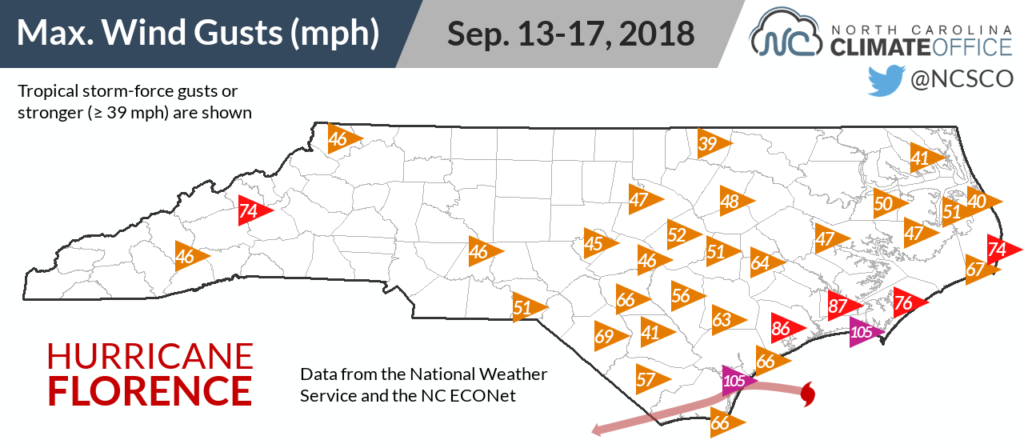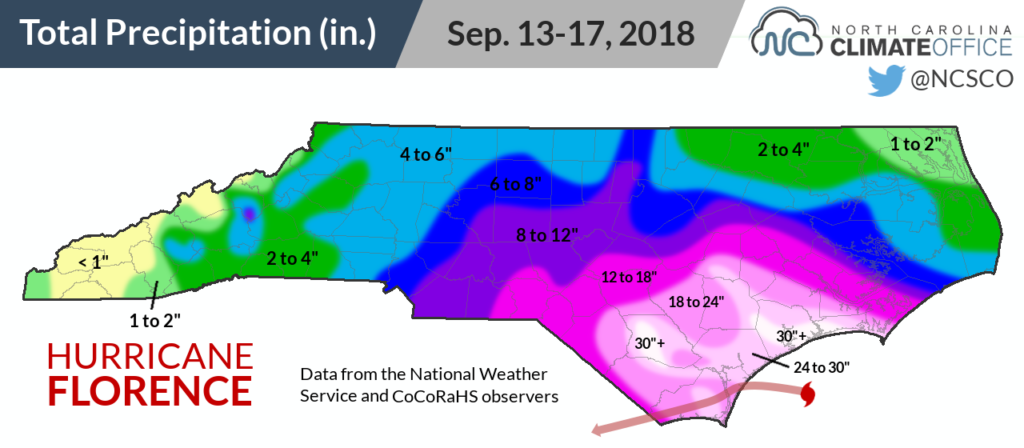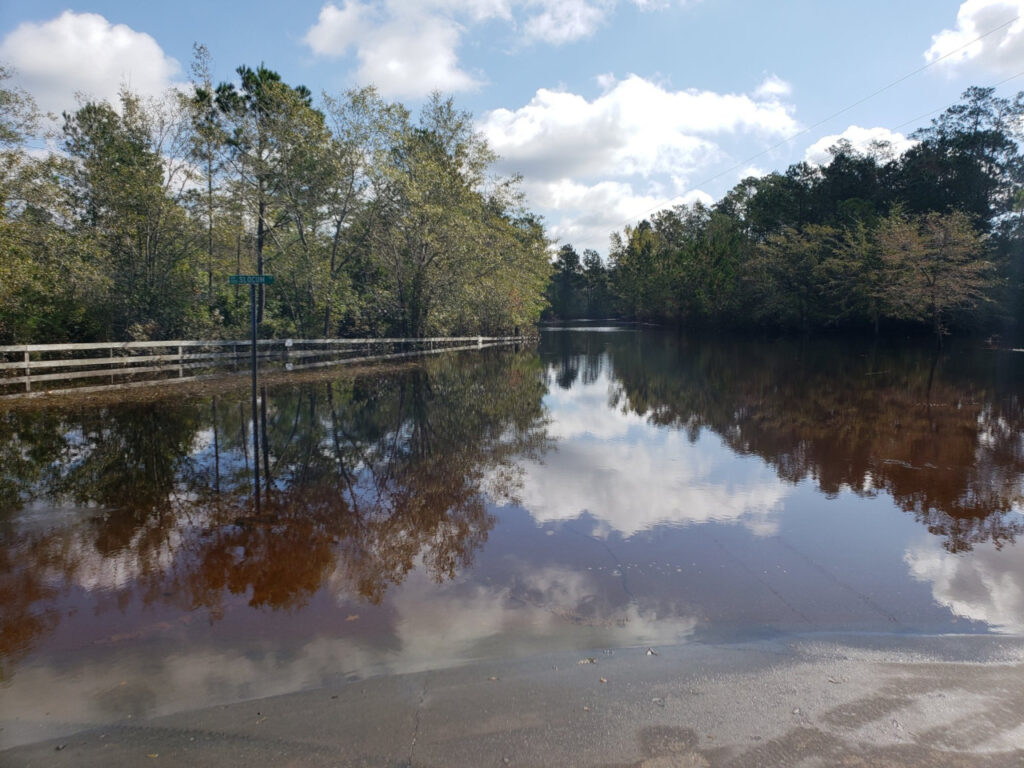Where in North Carolina Did Hurricane Florence Hit
On this day in 2018, Hurricane Florence successful landfall in North Carolina, and the worst was yet to come as the storm began its cringe across the submit. After five days of rain, we were left with record flooding and more questions than answers near what the weeks, months, and eld out front would feeling look-alike.
Our first assay to put Florence into a broader climate context was our Rapid Reaction blog post from Sep 18, 2018. IT has become one of our most-viewed posts and one of our main resources about the storm and its damage.
With the benefit of sentence, we now have more perspective about Florence, its impacts, and where it fits within our recent and total clime. So connected the two-year day of remembrance of Florence hitting N, we're winning a look at our initial recapitulate of the storm with added commentary and updated statistics.
Force History
Considering how 2020 has shaped up, with 19 named storms thus far and triple systems across the Atlantic the right way now, 2018 appeared quiet by comparison. Florence was only the sixth named violent storm at that point in the season.
Indeed, it was a comparatively inactive flavor up to that point, but Florence was the commence of an uptick of bodily function near the typical apex of the season. A our archetype blog post celebrated:
Poise body of water across the eastern Atlantic and strong confidential information shear over the Caribbean Sea inhibited storm development from June through Honourable.
The onset of the climatologically most overactive month in the tropics brought accelerative and in a higher place-normal sea surface temperatures murder the US east coast, and a surge of five storms developing in a two-week period. Florence was the commencement of those, decorous a tropical depression just after it emerged off the African coast on August 31.

When all was said and done, 2018 was a slightly above-normal season, with 15 named storms compared to the 1981 to 2010 average of 12.1 storms each year.
And Florence wasn't the merely tempest to affect North Carolina that season. Just united month after, the remnants of Hurricane Michael crossed the Piemonte at tropical storm enduringness, whipping upfield winds to levels non seen since Hurricane Hugo in 1989.
While we compared Firenze's track and meteorological evolution to Hurricane Isabel, which also reduced as it approached the glide, clock time has made information technology clear that their impacts were vastly different.
Ii months after Isabel, even the segment of Hatteras Island that was washed out by the surprise had been rebuilt. Two months after Firenze, coastal communities such as Pollocksville in Jones County were nonetheless drying unsuccessful, with homes and businesses damaged by mold or destroyed by the 20-foot altitudinous floodlight waters.
As time has destroyed on, it has get on increasingly clear that Florence almost defies comparing, as at that place were few short-terminal figure solutions or easy rebuilds in the wake of the flooding that it left behind.
Richly Winds and Storm Surge
Florence's weakening to a Class-1 ramp at landfall was a relief to many, but it was notwithstandin a powerful hurricane even hours after moving over land. The National Upwind Service in Wilmington compiled impacts across the Confederate coast and noted hurricane-force wind gusts throughout Pender County, which suffered significant damage due to downed trees and eroded sand dunes.
As Florence crept midland, so did its gusty winds, and our office's weather station network made an impressive measurement of the storm's broader impact across the state, which we shared out in our original C. W. Post:
The storm's stupendous diameter meant tropical storm-force winds were mat up nearly 150 miles from the center, as far northeast as Warrenton. Among our ECONet, 21 stations — exactly half of our network — experienced wind gusts of 40 miles per hour operating theater greater.

Operating a statewide network like the ECONet International Relations and Security Network't simplified, especially during a hurricane, but preparations and contingencies we set astir long-lived earlier Florence helped keep our network running during that event, every bit our ECONet manager Sean Heuser explains:
One of the biggest assets of the ECONet is that the majority of the stations run off of solar energy and rich person a battery that can withstand a few days with little to no sunlight. This was critical during the storm equally only one of our 42 stations befuddled power during the event. What is more, since the majority of our Stations of the Cross communicate via cell ring, as all-night arsenic the cellular networks were up and running, we were able to collect the information at our regular five-minute time interval.
Quality-dominant the extreme point rainfall totals measured during the storm also successful for quite the challenge. However, because we test all of our rain gauges every summer and replace the ones that fall out of calibration, we had confidence that their hurriedness totals were precise.
We did have one issue with our Castle Hayne station not reporting whatever precipitation during the storm. This is where having a second hastiness sensor at apiece site comes in handy. We utilised the wallop sensor's hastiness totals during the storm — 19.23 inches from Florence — and for weeks afterwards, since the massive flooding around Wilmington delayed our return visit to repair the tipping bucket sensor.
Maintaining a statewide brave web provides a number of unique challenges. However, visiting sites trio times per class for routine alimony ensures that the Stations are always in good condition and gives us confidence that they will do as intended during historical storms such as Florence.
Those widespread high winds sorbed with soils weakened by the rain resulted in umteen downed trees and power lines. Duke Zip alone reported 1.8 million outages across the Carolinas. The NWS Wilmington said that more than 90% of New Hanover County lost tycoo during the storm, and portions of Whiteville in Columbus County were without power after an electrical substation flooded.

Rainfall and In flood
Some of the most impressive observations ready-made during the storm were the immoderate rain totals — the result of an estimated 8 trillion gallons of water falling crossways the state over a five-day period. Our original blog post explained the unusual circumstances that led to such heavy rain:
As a perfect contrast to many another of our other hurricanes that quickly move through the Department of State after making landfall, Firenze slowed down to a crawl. Upper-level nasal pressure systems encircled the storm on trinity sides, and with nothing in the atmosphere to steer the storm, it moved westward at a mere walking pace over the weekend.
That made rainfall and inland implosion therapy the greatest threat from Firenze, especially across the grey coast. A moisture-rich onshore flow allowed for several days of heavy rainfall that shattered the tell record for rainfall from a tropical system of 24.06 inches, which was circle finished a iv-sidereal day time period in Southport during Hurricane Floyd in 1999.
After the rain reports from Florence rolled in, the highest amount in the state was35.93 inches — nearlythree feet of pelting! — as metric by a CoCoRaHS beholder near Elizabethtown in Bladen County.

This dense network of volunteer precipitation reporters well-tried its worth during Firenze. In 58 counties, the highest storm-total rainfall was plumbed by a CoCoRaHS observer.
An analysis conducted past our office unlikely year also found that the average hurry from CoCoRaHS observations in the Coastal Plain was an inch greater than from other monitoring networks — a Testament to the ability of the volunteer network to track localised conditions where automated weather Stations of the Cross much aren't available.
Our post from Sep 2018 also pointed out that the rains from Florence added to the wet start of the class in many locations:
Prior to the storm, Hatteras and Wilmington were already along pace for their wettest years on record, as well as Marion and Mount Mitchell in the western part of the state. The 23.05 inches of rain from Florence at the Wilmington Aerodrome bumped high its yr-to-escort total precipitation to 86.25 inches . That site has already set a new record for annual accumulation, besting the 83.65 inches in 1877, and there are ease more than three months left in the twelvemonth!
By the end of the year, Wilmington finished with 102.40 inches of amount hurry, and Climb up Mitchell set a state record for the wettest calendar year at any unvarying emplacemen, with 139.94 inches total.
It was also North Carolina's wettest year connected put down dating back to 1895, with a statewide average hurry of 68.35 inches. That broke the previous record of 63.16 inches from 2003 by quite a a wide margin, and the rain from Florence — including to a higher degree a foot across the Sandhills and grey Inshore Pure — was a key subscriber to it number.

A Storm for the Records
2 years after Florence, we make a better feel for the damage from the storm, and information technology was immense. Florence sits at the pinch of the list of our costliest hurricanes. The governor's office estimates comprehensive damages from Florence totaling $17 billion. This is much the combined damage from Floyd and Matthew, which are the most kindred storms in the historical paper that also caused widespread inland implosion therapy.
Florence was as wel causative 45 addicted fatalities in Old North State. That places information technology in fourthly among our state's deadliest known hurricanes, behind the July 1916 storm (~80 deaths), the Sep 1883 hurricane (53 deaths), and Floyd (52 deaths).
Since Florence, we've been asked how rare of an issue IT was, and whether it could happen once more. Quantifying a storm corresponding it is ambitious since there are so fewer historical data points thereon cease of the distribution, but supported streamflow observations from across the Carolinas, the US Geological Survey unsuccessful to assign some measure of Florence's extremity:
Twenty-eight of the 80 streamgages measuring streamflow had new peaks of phonograph record. … Of the 28 streamgages analyzed, the estimated annual exceedance probability (AEP) for the Hurricane Florence peak streamflow at nine of the streamgages was to a lesser degree 0.2 percent, which in terms of recurrence intervals isgreater than a 500-year flood event, at triplet streamgages it was equal to a 0.2-percent flood consequence (500-year recurrence interval), and at hexa streamgages it was betwixt a 0.2- and 1-percent AEP outpouring (between a 500- and 100-class recurrence interval, respectively). For the remaining 10 streamgages, the estimated AEP was between 1.5 and 7.1 percent, which in footing of return intervals is approximatelya 67- to 14-year flood event, respectively.
Hurricane Floyd was too believed to be akin to a once-in-a-life event, but we've now had three major flood-producing hurricanes in the past two decades. Changes in the background signal climate appear to represent stacking the odds in favor of storms look-alike these.
Warming in the ambiance and oceans is increasing the water vapour content and supercharging tropical storms with moisture. Discharged this spring, North Carolina's first Mood Science News report — a summary of the best ready science on climate change and its impacts in our express — found that "Compact hurry accompanying hurricanes is same potential (90 to 100% probability) to increase, increasing fresh water flood potential."
That report also noted that "While global warming is likely to lead to heavier rain rates in hurricanes, there is no scientific evidence that prox landfalling hurricanes are Sir Thomas More likely to unbend after landfall."
So heavier rain and frequent flooding from tropical storms may continue to get over more common, just the earth science factors close Florence that caused it to slow down so well should remain a rarified and exceptional event.

Two years after Florence, recovery is still underway, while rebuilding and preparation for the next storm also remains a unfailing concern, specially amid the recent activity in the Ocean. We've straight off had three landfalling hurricanes (Florence, Dorian, and Isaias) in a two-year period, which has previously happened only three other times in the past 170 geezerhood, in 1984-86, 1954-55, and 1878-80.
Add together in Matthew, which remained just offshore but still caused record swollen along the Cape Fear and Neuse rivers, and the remnants of Michael, and we're looking at five impactful storms in a four-year stretch.
Among them, though, none compares to the extent — with rain and stormy winds from the shores to the slopes — and best extremity of Hurricane Florence, that even two years later leaves us in awe at the memories of interstates-reversed-canals, homes swallowed up by the floods, and a storm that Sabbatum over us for five days straight.
Where in North Carolina Did Hurricane Florence Hit
Source: https://climate.ncsu.edu/blog/2020/09/florence-revisited-our-wettest-hurricane-two-years-later/
0 Response to "Where in North Carolina Did Hurricane Florence Hit"
Post a Comment